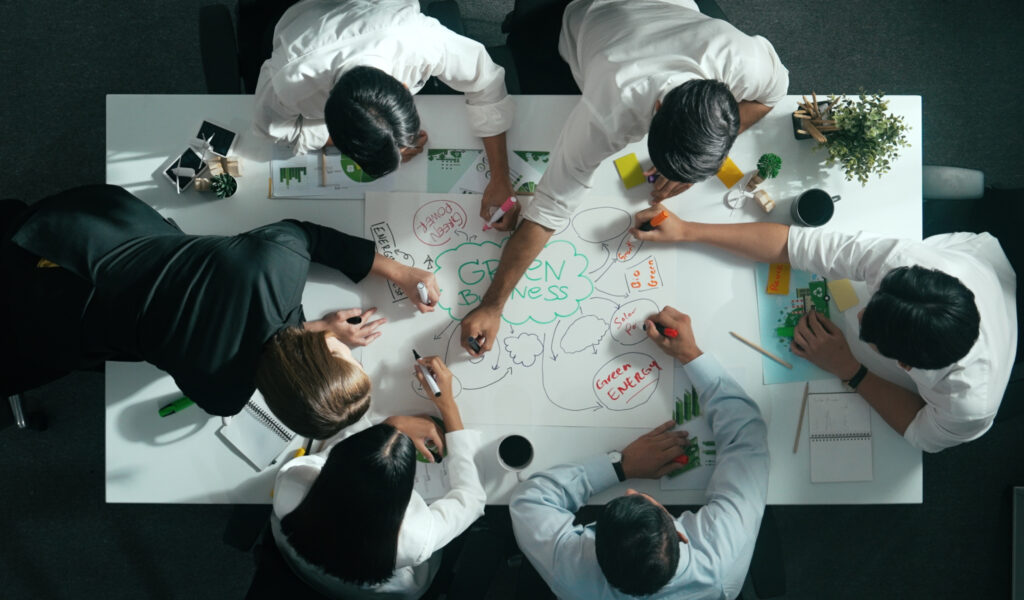Disclaimer: We do not endorse any of the companies or products mentioned in this blog; they are included for informational purposes only.
The global economy is facing unprecedented pressure to reconcile environmental sustainability with financial growth. Traditional ‘take-make-dispose’ practices are no longer enough in a world grappling with the combined challenges of climate change and resource scarcity, as well as meeting shifting consumer demands.
Our global economies currently consume around 1.6 times what the planet can provide, which means we are using about 60% more resources than is sustainable. In response, the circular business model is emerging as a powerful alternative, one that reimagines products, processes, and profits in a way that benefits both the planet and the bottom line.
What is a Circular Business Model?
A circular business model is an approach to commerce that designs waste and pollution out of the system, and keeps products and materials in use for as long as possible. Closing the loop through Rethinking and Redesigning systems to avoid wasteful consumption and address the root cause of the linear use of materials. Rather than extracting raw materials, manufacturing goods, and discarding them after use, circular models focus on the Zero Waste Hierarchy of Reducing resource input, extending product life cycles through Reuse, and Recovering those items diverting them from landfills.
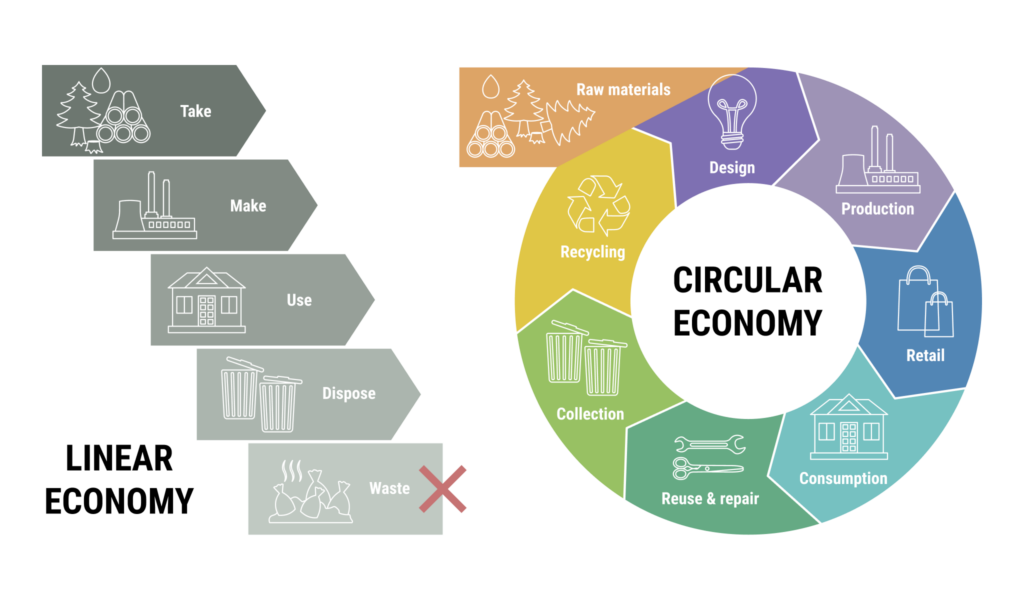
Linear vs Circular Business Model
The linear business model operates on a straight path: extract, produce, consume, and discard. This leads to waste accumulation, resource depletion, and increasing costs associated with environmental harm and material scarcity. We currently produce about 2.01 billion tonnes of waste annually on a global scale, and this is set to rise to around 3.4 billion tonnes by 2050. In addition, currently only about 7.2% of materials are cycled back into the economy. This is clearly unsustainable.
In contrast, the circular economy model is regenerative. It emphasizes the continuous flow of materials through reuse, refurbishment, remanufacturing, and recycling. Products are designed for longevity, repairability, and eventual reintegration into the production cycle. Circular systems reduce dependency on virgin materials, minimize emissions, and often create new revenue streams through innovative service-based offerings.
Why Adopt a Circular Business Model?
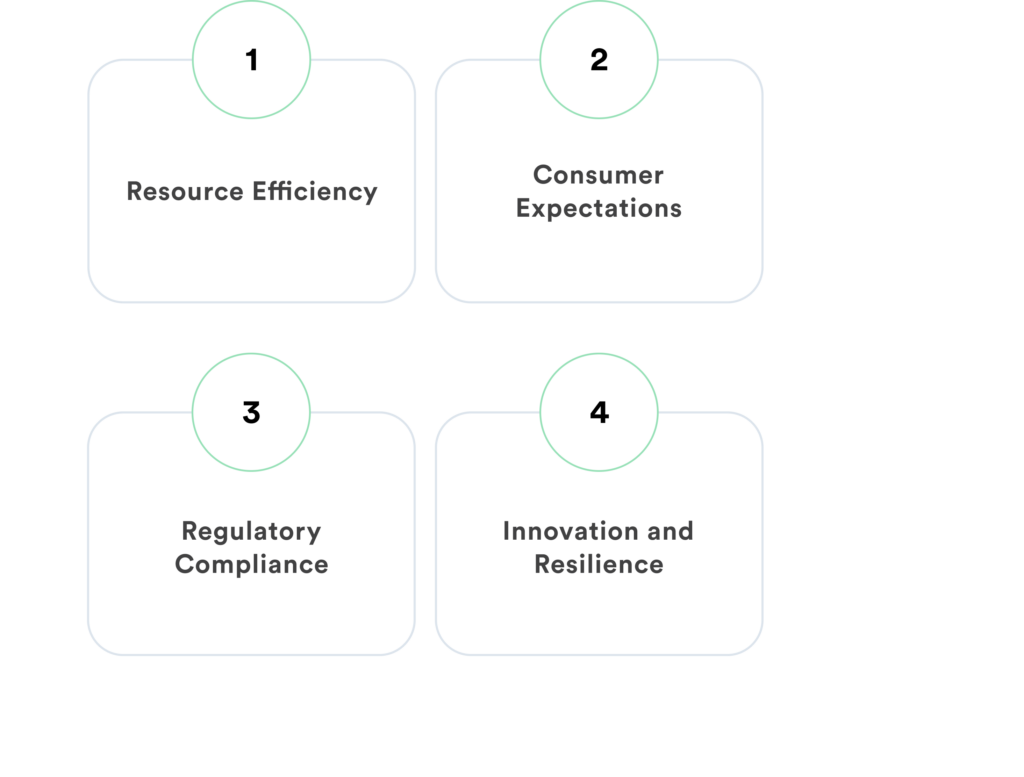
Transitioning to a circular model is no longer a niche sustainability tactic—it’s a strategic imperative for businesses seeking long-term relevance and resilience.
Resource Efficiency
Circular models dramatically reduce waste and raw material use. By maximizing the value extracted from resources, companies lower costs and mitigate risks related to supply chain disruptions and fluctuating material prices.
Consumer Expectations
Modern consumers are more environmentally conscious than ever, with around 66% of people concerned about increased waste generation. Brands that demonstrate responsibility through circular initiatives—like product take-back schemes, zero-waste packaging, or refurbished goods—can build trust and loyalty. Transparency and ethics are increasingly tied to brand equity.
Regulatory Compliance
33 States in the United States have enacted EPR laws and governments around the world are implementing or strengthening existing regulations that promote or mandate circular practices. From Europe’s Circular Economy Action Plan to extended producer responsibility (EPR) laws, companies that get ahead of the regulatory curve avoid penalties and position themselves as leaders in sustainable innovation.
Innovation and Resilience
A circular economy fosters creativity by challenging companies to rethink product design, distribution models, and end-of-life solutions. It cultivates operational resilience by reducing reliance on finite resources and encouraging the development of localized, modular, and adaptable systems.
Types of Circular Business Models
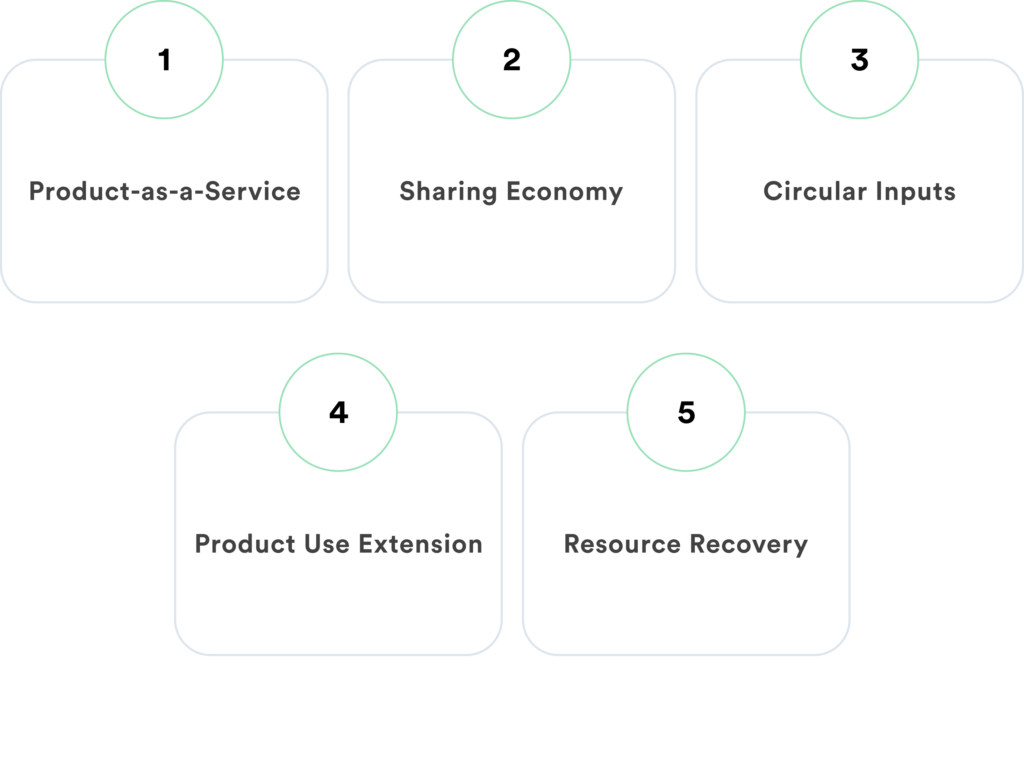
Circularity is not a one-size-fits-all concept. Different models can be tailored to suit various industries and market dynamics. Here are five primary types:
Product-as-a-Service
Instead of selling products outright, companies offer them as a service. Customers pay for the performance of the good or service rather than direct ownership. This incentivizes manufacturers to build durable, maintainable goods and allows for them to Recover them at end-of-life for Reuse, refurbishment or recycling.
For example, Signify offers “light as a service”, where customers lease lighting solutions rather than buying the equipment, enabling the company to maintain, upgrade, and reuse components.
Another example, Xerox maintains printers, provides regular maintenance, repairs and upgrades while maintaining ownership of the equipment.
Sharing Economy
Sharing economy models facilitate the shared use of products or assets to improve utilization rates. Platforms that allow people to rent, borrow, or co-own goods Reduce overall consumption and manufacturing demand by replacing ownership with access to spaces, places and experiences. Companies like Zipcar, WeWork, Turo, and Vrbo are just some of the companies that engage in the sharing model.
Circular Inputs
Firms use renewable, recycled, or biodegradable materials in production processes. These circular inputs reduce environmental impact and close resource loops. As an example, Adidas’ Futurecraft Loop shoes are made entirely from one recyclable material and designed to be returned, ground down, and remade into new shoes. Nike Grind, uses manufacturing scrap, unused materials and end of life footwear and apparel and repurposes them into “Nike Grind” materials. “Nike Grind” has been used not just to make new footwear, but has been used to make Dog Toys, sports surfaces and carpet padding. These materials have also helped facilities earn LEED certification for their buildings.
Product Use Extension
This model focuses on designing products for durability and repairing, upgrading, or reselling them to extend their useful life. Patagonia’s Worn Wear program repairs used clothing or resells it, encouraging customers to keep garments in circulation. Another example, The Coach (Re)Loved Exchange Program encourages customers to trade in their eligible pre – loved items for credit. These items are sent to the TRUE Zero Waste Certified Coach (Re)Loved and Repair Workshop where pre – loved and damaged Coach products are given new life through Creative Repairs, deconstruction for new uses or restoration.
Resource Recovery
Waste materials are collected and transformed into usable inputs. Companies capture value from byproducts or end-of-life goods. One company doing just that is TerraCycle, partnering with brands to collect and recycle complex waste streams like toothpaste tubes and snack wrappers. In 2022, Fernway established the first vaporizer recycling program on the East Coast of the United States, to collect their devices. This allows for the component materials like surgical grade steel, cobalt, lithium and nickel to safely enter the supply chain.
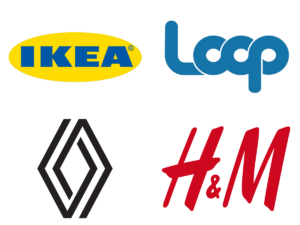 Additional Real-World Examples of Circular Business Models
Additional Real-World Examples of Circular Business Models
Numerous companies across industries are proving that circularity works—both environmentally and economically. Here are just a few examples of businesses demonstrating how the circular system can enhance operations:
- IKEA is investing heavily in furniture take-back and resale programs and has committed to becoming a fully circular business by 2030.
- Loop, a shopping platform by TerraCycle, enables consumers to buy products in reusable containers that are collected, cleaned, and refilled.
- Renault runs a remanufacturing facility that restores car parts to like-new condition, saving energy and materials.
- H&M is experimenting with garment recycling machines in-store, allowing customers to turn old clothes into new fashion items on-site.
Benefits of Circular Business Models
Adopting a circular approach offers multiple competitive advantages. Some of the benefits of circular economy models include:
- Cost Savings: Reduced reliance on raw materials and improved operational efficiency lower long-term costs. It is estimated that a move to a circular economy could save $100 billion on annual waste management costs.
- New Revenue Streams: Offering services, repairs, or refurbished products creates diversified income.
- Risk Mitigation: Companies are less exposed to resource shortages, price volatility, and regulatory penalties.
- Brand Differentiation: Circular initiatives appeal to eco-conscious consumers and investors.
- Talent Attraction: Sustainability-oriented companies attract employees who value purpose-driven work.
 Strategies for Implementing a Circular Business Model
Strategies for Implementing a Circular Business Model
Transitioning to circularity involves changes across the value chain. Companies must consider the following strategic actions:
- Design for disassembly and longevity: Products should be modular, repairable, and built with long-term use in mind.
- Build take-back infrastructure: Develop systems for collecting, refurbishing, or recycling used products.
- Foster Collaboration and Build Partnerships: Circular systems require collaboration, traceability, and sometimes entirely new partnerships. By fostering collaboration and building strong partnerships, businesses can create a resilient and efficient supply chain.
- Integrate digital tools: Technologies like IoT, blockchain, and AI can track product life cycles, manage resources efficiently, and support circular supply chains.
- Educate and Engage: Clear communication with consumers is essential to drive engagement with new models like leasing, subscriptions, or returns. Internally, shifting from a linear mindset to a circular one involves education and behavior change. By educating and engaging employees, businesses can cultivate a culture that embraces circular principles.
- Plan Ahead or Budget Accordingly: Investments in redesigning products, setting up reverse logistics, or deploying new technology can be significant. By planning ahead and budgeting accordingly, businesses can manage these costs effectively and ensure a smooth transition
- Define and Track Metrics Early: Defining and tracking circular metrics can be challenging, especially in early adoption phases. By establishing clear metrics and tracking them from the outset, businesses can measure progress and make informed decisions.
- Stay Informed and Advocate for Supportive Policies: In some markets, policies may not yet support circular practices or may even hinder innovation. By staying informed and advocating for supportive policies, businesses can navigate regulatory ambiguity and drive positive change.
The Future of Circular Business Models
Looking ahead, circular models are poised to become the norm. Growing consumer awareness, corporate responsibility initiatives, and government mandates are accelerating the shift. Innovations in biomaterials, digital platforms, and advanced recycling will make circularity more accessible and scalable.
Moreover, circular thinking is expanding beyond products to include circular cities, circular agriculture, and circular finance, indicating that this model is influencing systemic change across the global economy.
As the planet confronts climate change, biodiversity loss, and economic inequality, circularity offers a hopeful path forward—one that aligns people, planetary health and profitability.
Sources
World Circular Economy Forum. (2024). Facts about the circular economy. https://wcef2025.com/media/facts-about-the-circular-economy/
Kaza, S., Yao, L., Bhada-Tata, P., & Van Woerden, F. (2018). What a waste 2.0: A global snapshot of solid waste management to 2050. World Bank. https://datatopics.worldbank.org/what-a-waste/
Parchomenko, A., Borsky, S., & Nordensvärd, J. (2020). Resource efficiency and the circular economy in Europe: Lessons from material flow data. Cleaner and Responsible Consumption, 2, 100006. https://doi.org/10.1016/j.clrc.2020.100006
United Nations Development Programme. (2022, August 15). What is the circular economy and how it helps fight climate change. https://climatepromise.undp.org/news-and-stories/what-is-circular-economy-and-how-it-helps-fight-climate-change
European Environment Agency. (2023, February 2). Public views on the circular economy. https://www.eea.europa.eu/en/analysis/publications/europes-circular-economy-in-facts/public-views-on-the-circular-economy
European Commission. (2020). Circular economy action plan. https://environment.ec.europa.eu/strategy/circular-economy-action-plan_en
Sustainable Packaging Coalition. (n.d.). Extended Producer Responsibility (EPR). https://epr.sustainablepackaging.org/
edie. (2023, November 7). Circular economy could save $100bn on waste management costs annually. https://www.edie.net/circular-economy-could-save-100bn-on-waste-management-costs-annually/
United Nations Office for Disaster Risk Reduction. (n.d.). Biodiversity loss. https://www.undrr.org/understanding-disaster-risk/terminology/hips/en0008
Government of Mauritius. (n.d.). Circular economy strategy for Mauritius. https://circulareconomy.govmu.org/circulareconomy/?page_id=176
RTS. (n.d.). A guide to understanding the circular economy. https://www.rts.com/resources/guides/circular-economy/
RTS. (2023, June 5). The benefits of a circular economy. https://www.rts.com/blog/benefits-of-circular-economy/

